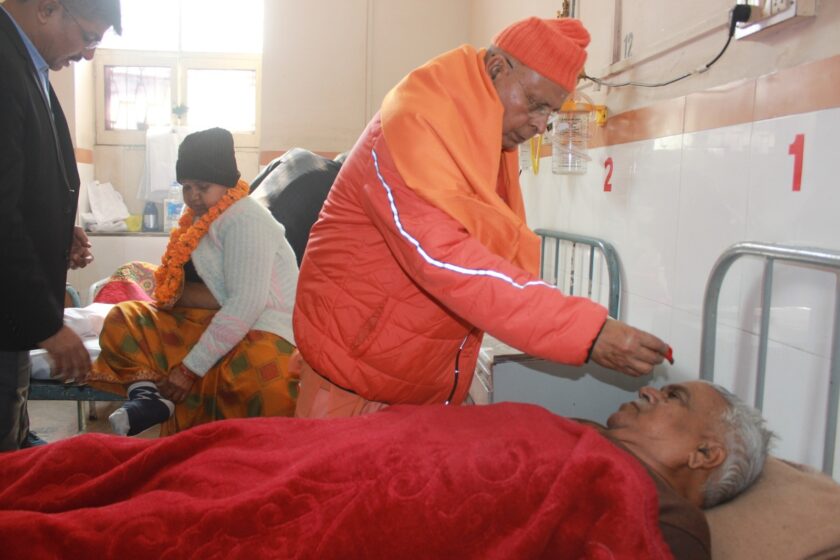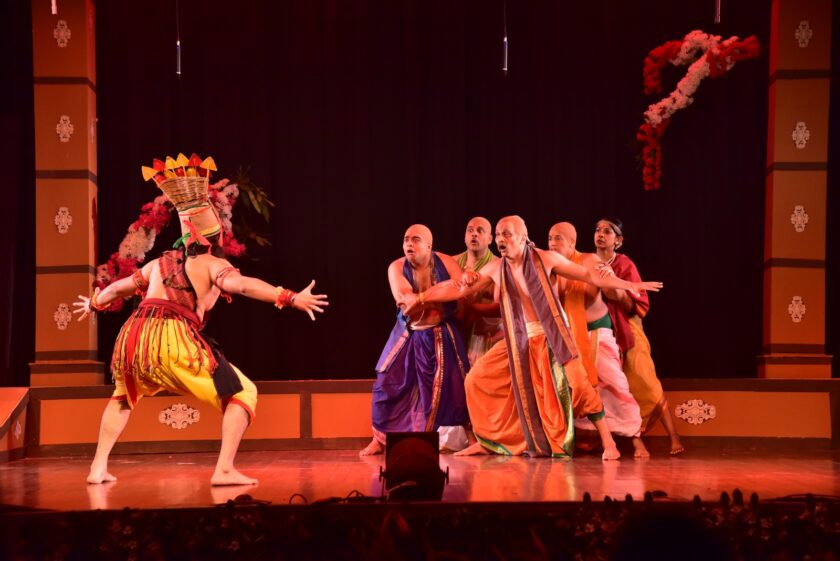Lucknow: In an era where art is often bound by walls of museums, the Wall Art Festival is a breath of fresh air, bringing art directly to the people. This event not only democratizes art by making it accessible to all but also transforms public spaces into open-air galleries, infusing them with cultural richness and social significance. A vivid example of this cultural confluence recently unfolded in Lucknow, where French artist Charles Foussard adorned the city’s streets with a striking mural titled “Quantum Portrait.”
A Unique Expression of Cross-Cultural Art
The Wall Art Festival, in its fourth edition, has grown into a symbol of Indo-French cultural exchange, inviting renowned artists like Foussard to paint across India’s cities, each creation reflecting a blend of French artistry and Indian inspiration. The festival in Lucknow marked the final leg of Foussard’s journey through India after Hyderabad and Kolkata, where he left murals that sparked conversations around culture, nature, and society. Here in Lucknow, he created a captivating artwork on the walls of Le Press Galleria’s parking area, a site steeped in history as it once housed the iconic Munshi Newal Kishore Press. The mural was unveiled in the presence of Prof Nishi Pandey, President and Nicolas Mace, Director, Alliance Francaise de Lucknow and other team members.
Foussard’s painting, “Quantum Portrait,” is a celebration of three recurring themes in his work: portraiture, landscape, and still life. The artwork portrays a woman—a symbolic figure representing the divine feminine power of Shakti and Lord Shiva—set against a backdrop that beautifully merges the animate with the inanimate. His work uniquely incorporates a “trinetra,” or the third eye, creating a transcendental element that reflects both Indian spiritual symbols and his signature style of hallucination and poetry.
Art that Bridges Two Worlds
Charles Foussard, inspired by his time on the beaches of La Réunion and Bordeaux, brings a dream-like quality to his works, blending transparency and blurring effects to showcase the dance between visible and invisible realms. The artwork’s nuanced layers ask viewers to reflect on their own perceptions of reality and their role within it, a message that resonates universally across cultures. Employing acrylic paint, Foussard uses transparency and haziness to capture fluidity and suggest multiple dimensions, evoking the profound shifts occurring in today’s digital age.
The Venue: A Testament to Intellectual Legacy
The Le Press Galleria location for this mural is itself a cultural landmark. Established by Munshi Newal Kishore in 1858 at the young age of 22, the Newal Kishore Press was a pioneering establishment, breaking intellectual barriers by printing in multiple languages and making religious and philosophical texts accessible across communities. The press from its humble beginnings by 1882 become the worlds second largest printing concern after the alpine press Paris.
The Newal Kishore Press had 10000 publications on various topics- religion, philosophy, history, science, agriculture, law etc.The press published in various languages like Arabic Persian, Hindi, Sanskrit and Urdu.The press made a massive contribution to the solidarity of the region by printing religious books of Hinduism, Islam and Sikhism and their translation into Indian language and this lead of the breaking of intellectual barriers between different religions.
The press was responsible for printing the first newspaper in the vernacular by the name of Awadh Akbar. It also printed Madhuri a fortnightly with Munshi Premchand as its editor.
This venue, with its historical resonance, adds to the mural’s allure, attracting a modern audience with its legacy of open-mindedness and cultural convergence. Today, the site attracts a diverse crowd of young minds, fostering an ideal setting for Foussard’s message to inspire and connect.
Foussard’s Reflections on Lucknow and Indian Culture

Reflecting on his time in Lucknow, Foussard shared that working here had a charm that was distinct from his previous stops in Kolkata and Hyderabad. The city’s vibrant art scene, particularly among young people, made it a perfect setting for his art. He was also enamored with the local culture, indulging in delicacies like Nahari and kulcha, which he found to be as unique as the city’s artistic landscape. Foussard acknowledged the hospitality of the Lucknow Alliance Française and its members, who bridged language gaps and helped him immerse in local culture.
The Role of Alliance Française and the French Embassy
Alliance Française de Lucknow, a central institution for Indo-French cultural exchange, has long facilitated such collaborations, allowing the French and Indian communities to experience and appreciate each other’s artistic heritage. The French Embassy in India, through the French Institute in India, further supports these cross-cultural events, deepening the bilateral bond through artistic, educational, and diplomatic initiatives.
Through events like the Wall Art Festival, the French Embassy and Alliance Française aim to foster mutual appreciation of diverse traditions. Foussard’s mural, in its colors and symbolism, exemplifies this mission, inviting people from all walks of life to engage with art beyond language or cultural confines.
An Open Invitation to Dialogue
Foussard’s mural has turned a public wall into a canvas for cross-cultural discourse, inviting an intergenerational audience—students, families, and curious passersby alike—to engage with his vision. By positioning his artwork in everyday spaces, he bridges the distance between artist and audience, opening up dialogues about social issues and cultural nuances. Observers of the “Quantum Portrait” can witness the art’s evolution in real-time, understanding the techniques and concepts that bring it to life, a mini-workshop in the open air.
Legacy of the Wall Art Festival
The Wall Art Festival has become a traveling celebration of artistic dialogue, touching the hearts and minds of people across India. With each city it visits, it leaves behind vibrant murals that tell stories and spark inspiration. Lucknow’s residents can now admire a piece that echoes both French artistry and Indian spirituality, uniting two worlds in a single stroke.
Through art, the Wall Art Festival has indeed created a harmonious blend of Indo-French culture, reminding us that creativity knows no borders, only bridges.





